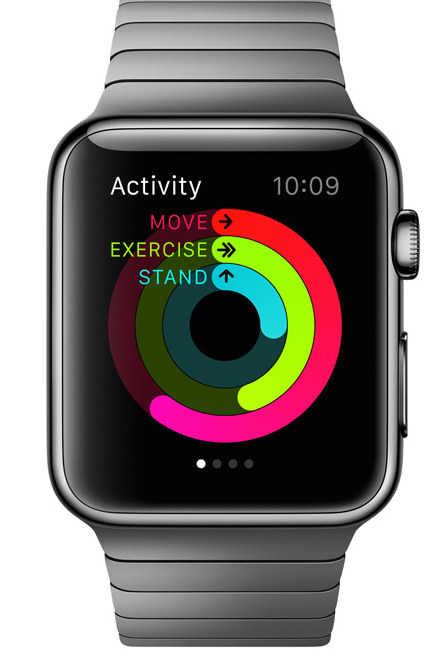
Are you staying on top of the changes that are happening in the e-learning industry? Take some time this fall to learn more about these 10 trends that are out there revolutionizing our industry right now.
Do you have some trends that you want to add? Don’t forget to add your comments below to continue the conversation.
1. Multi-Device Learning (Responsive Design)
As learners implement and use more and more devices to manage their lives and jobs, we need to create learning opportunities that respond to those devices. Our learning programs should be available on whatever device that is for our learners. Responsive Design allows us to do this. Responsive Design gives us the ability to create courses that respond to the size of the device, not forcing people to use certain ones to manage their work and life and another to take their learning.
New tools that will help with this:
HTML5 opened up the door to do this but Adobe Captivate 8 allows you to quickly create responsive courses that you can publish.
2. Video (Interactive)
Learning Video has been around for a long time but it has become just as necessary to courses as audio. However, the trend isn’t for formally produced video in a course but rather informal, quick video clips (think YouTube) that may even be taken with a mobile phone. It allows people to interact and view the learning you are presenting in a different way. There has also been a push for interactive video. Interactive video is video that you can actually interact with instead of just watch. As learners become more sophisticated in what they can create themselves, there is always a push to stay ahead of that.
New tools that will help with this:
Any mobile phone or video camera can help you take a scenario and make it come to life to really illustrate a challenge that someone may have. Hapyak Interactive is a tool that allows you to add interactivity to your courses.
3. Mobile Learning
While in reality we are building a lot more courses that are responsive for multi-device learning, true mobile learning is still something that is a trend that will become more and more important as companies try to catch up with their learners. Remember, mobile learning does not mean just shrinking your course to appear on a phone or other device. There is a whole different methodology to creating mobile courses.
New tools that will help with this:
Adobe Captivate 8 again will help with this because you can visually see what your course will look like on a mobile device. Apple, of course, has great documentation on visual design standards to learn for mobile device course design.
Check out this information here.
4. Social Learning
As we think about how people are learning now in the social media age, we need to reconsider how a lot of learning is happening — a lot of times it is not in the formal learning event but outside of it. Look for ways to extend the community beyond the formal training event. Create ways for people to upload their own examples or interact with each other- online but still social. Be a part of creating your social, informal learning environment that your employees are already creating.
Tools that will help with this:
Yammer, is an internal tool that acts like twitter for your organization. Also, creating an intranet site that allows for comments and community uploads (video, content, etc.) is the easiest technology to use to build a space for social learning.
5. Short, Bite-sized Chunk Learning Courses
Forget about the long 8 hour classroom or online courses. We have access to so much information and content that people really just need to have smaller, chunks of learning that they can consume at the time of need. Think about how you look something up when you need to know the definition or a fact about something. You turn to Google. Love Google or hate it, it has become the new standard in terms of where people go to find out anything. So our courses need to be delivered in small, manageable chunks as well as just in time.
Tools that will help with this:
Any of your regular elearning tools – the change appears in the design and development approach more than the tools themselves. For more information about design, see the E-learning Design Bootcamp above.
6. Gamification in Learning
Games in e-learning have been around awhile but ‘gamification’ is definitely something that will continues to be adopted. “Gamification is the use of game thinking and game mechanics in non-game contexts to engage users in solving problems.” (definition from Wikiopedia) Gamification adds rules, goals, structured experiences, and real world situations in a game environment. Learners become players and compete to solve problems and get to the next level of challenge. Strategies use a reward to entice people to keep learning (or playing). Rewards can be points, badges, levels, or progress bars to keep enhancing.
Tools that will help with this:
Any of the e-learning tools will work with this but if you are trying to do multi-player and complex levels, there are some tools that are better than others. (try html5 native tools or edge animate). But with our regular elearning tools, try to add levels to your elearning courses. You can lock-down certain pieces of the course or interface and as someone completes one level, another one is available to them. This will start the process of gaming in your learning as well as add some complexity and choice to the training.
7. Google Docs for managing teams and projects
Project teams are becoming more and more dispersed. It has become increasingly important to be able to use tools that allow for more collaboration that do not have a particular operating system constraint. Google has a great suite of products that allow us to collaborate in real time on project documents, course files and even on web/chat pages.
Tools that will help with this:
Google Drive, Google Sites, Google groups.
8. Agile Project Management
Project Management is an important piece of the development process. E-learning designers and developers have taken a page out of the web/software development world to look at more effective ways to iterate course design/development techniques. The rise of agile project management is definitely much needed as we start to move away from long development and rigid course designs that don’t change. Technology and learning needs are changing too rapidly to have a longer waterfall process.
Tools that will help with this:
Any agile project management software that allows for sprints.
9. Wearable Learning
Wearable technology brings huge ideas of how to extend online learning to really personalize the learner’s experience. Think about how you can impact the learner’s ability to learn something when they need it if they could access it on their body. Between google glass and new, highly anticipated apple watch, the ability to have more option where people can access your training/learning opportunities when the learner needs it. Think about a learning experience like Orientation, where someone has to learn about different areas of the office or safety items within their workspace. If they had a device that was on them, they could just get that information right from that location instead of logging on to computer.
Tools that will help with this:
Google Glass and Apple Watch are popular ones now. By using technology like geolocation and QR codes you can customize the experience for the learners to incorporate location services on these devices (will work on mobile devices too).
10. Tin Can API
Tin Can API opens up a whole new way to think about tracking your learner’s learning courses. It addresses those things missing in SCORM compliance, which is now over a decade old. The Tin Can API allows you to track your learner’s training (online or offline) wherever they are taking the training. It will track any activities that are trackable, sharable and quantifiable.
Tools that will help with this:
Any of the elearning tools that are out there will support the Tin Can API. It is important, however, to have a frank talk with your LMS provider to make sure they are staying on top of new standards and technologies. This will be your biggest barrier to implementation.
Have some other trends you want to mention? Join the conversion below.



